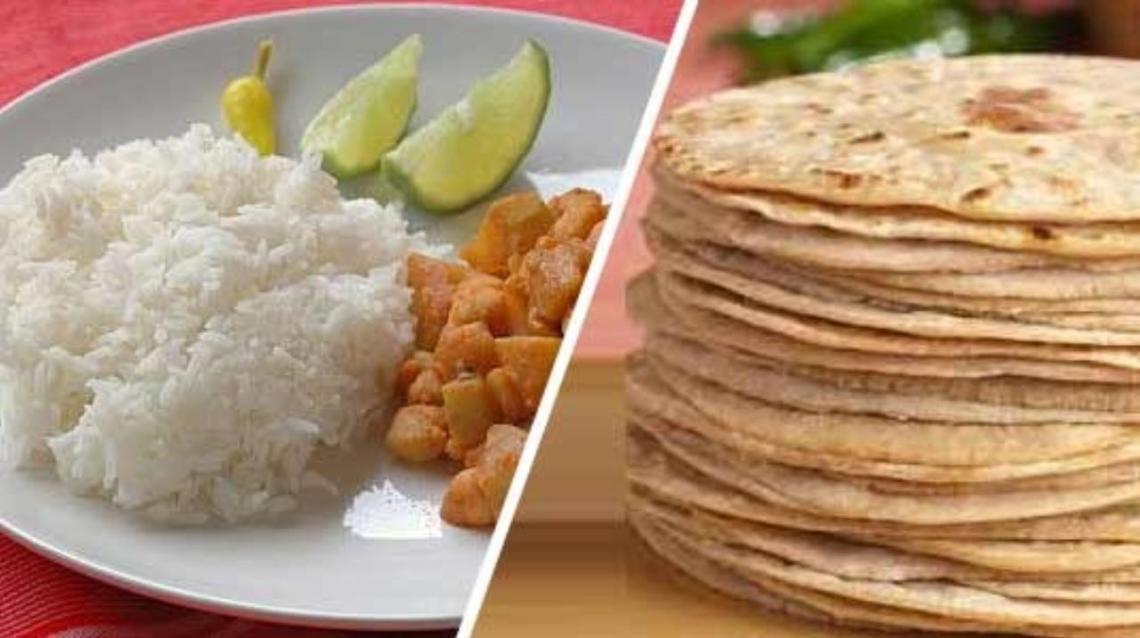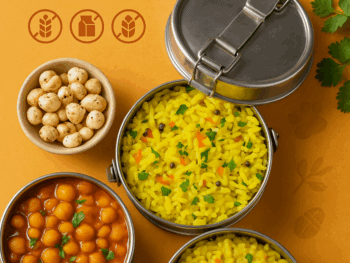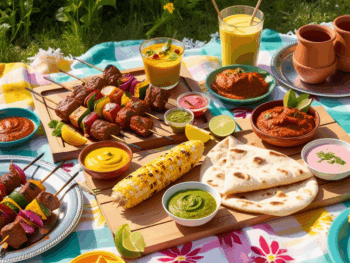I’m sure that you’ve heard the term ‘macro’ thrown around a lot lately. Counting and tracking macros has become more and more popular in the nutrition and fitness world. Maybe you are familiar with the term, but you don’t actually know what macros are. You may find yourself asking the following questions: What are macros? Why should I count them? How do I count my macros? Can’t I just count my calories? Confusing. I know. Is it worth it? Yes! Counting your macro intake can turn you into a fitness force!
What are Macros?
Macronutrients or macros are what makes up the caloric content of food. The three categories of macros are: fats, carbohydrates, and protein. It is important to count your macros and not just your calories because where you are getting your calories from really does matter. For example, calories ingested from naan and butter chicken have a different caloric impact than calories obtained from a salad, kaali daal, palak paneer.
It’s important to count your macros not just your calories because in any healthy diet its important to know where you’re getting your calories from. I have found that in counting my macros I am able to see the most change in my body and am better able to reach my health and nutrition goals.

But First Let’s Understand The Value Of Carbs And Essential Fatty Acids
Getting the right amount of protein, fat, and carbs will determine whether you are losing muscle, building muscle, losing fat or losing weight. Yes, there is a difference in weight loss and fat loss. We get our main source of energy from carbohydrates. We all need and use energy to get through the day, carbs are vital to physical activity and important for our mental health.
There are two different kinds of carbs: simple and complex.
Simple Carbs: These are easily digested so they will provide us with some quick fast energy. Examples include: Table sugar, brown sugar, candy, soda, honey, fruit. For those that celebrate Diwali the simple carbs can be found in the banana purée and jaggery syrup.
One of my favourite sugar substitutes is rosewater or adding herbs. A hint of rosewater adds sweet, floral aroma to Goan Coconut Cake (Baath), it keeps it moist, yet dense and blends well with the four types of coconut. And Rosewater does not have any simple carbs in it.

Complex Carbs: These are more nutritious than simple carbs, are higher in fiber, and take longer to digest to keep you fuller longer. Complex carbs also provide more sustained energy than simple carbs. Examples include whole grains (brown rice) and vegetables. As per The Indian Express Priyanka Chopra’s favourite Indian food is chapatti and rice. So yes you can still enjoy our desi food and still keep your healthy eating routine in check.

Fats help to keep our hormone levels in balance and they are essential nutrients that our bodies need to live. Make sure that you are getting your fats from healthy sources and stay away from trans-fats, as these foods will not help you to reach your fitness goals. Good sources for fats include avocado, nuts, coconut oil, avocado oil, and extra virgin olive oil.
Our bodies also need essential fatty acids (EFA). You can get these from supplements or directly from a food source. Our bodies cannot produce these on their own so we need help; EFAs build specialized fats called omega-3’s and omega-6 fatty acid chains to support the normal functioning of all tissues in our bodies. EFA can be found in a variety of food sources including fish oil, salmon and walnuts. Research has shown that when you have a calorie deficit and keep your protein high, that’s when you lose the most weight and you have to make sure you’re not eating far more than you’re burning off.

But once you’ve worked out how much you can eat, counting your macros could be just what you need to get the results you want.
Macro Counting Guide
To count macros you need to determine how much of each macronutrient you need daily, which is based on your individual body composition and fitness goals. Once determined, you go beyond just counting calories and track how many grams of carbs, fat, and protein a food will provide. You can then plan your macro diet around foods that will help you reach your daily macro targets. By tracking your macros you really are tracking your calories, but instead of just skimming the surface you are going into more depth. Here are the conversions from grams to calories for carbs, fat and protein.
CARBS: 1 gram of carbohydrates = 4 calories
FAT: 1 gram of fat = 9 calories
PROTEIN: 1 gram of protein = 4 calories
So if you had a food item that had 15g of carbs, 1g of fat and 20 grams of protein it would have approximately 149 calories. This is how I’ve calculated it below:
15g*4= 60 calories
1*9=9 calories
20g*4=80 calories
But if you are counting macros don’t worry about also hitting an exact calorie goal. Your calories will be where they need to be when you are hitting your macros.
See? It’s not that hard. Once you get into a groove you’ll definitely see a difference in your intake.
*as with all health tips make sure to see your doctor before you undertake any changes in your dietary regiment.
Nadine Afari
Author
Our Guest Fitness Expert, Nadine Afari (@fitthoney) received her Masters in Science degree from The University of Toronto then relocated to sunny California to accept a job as a health researcher for The University of Southern California. She has been studying health and medicine for 15 years at som...


















































































































